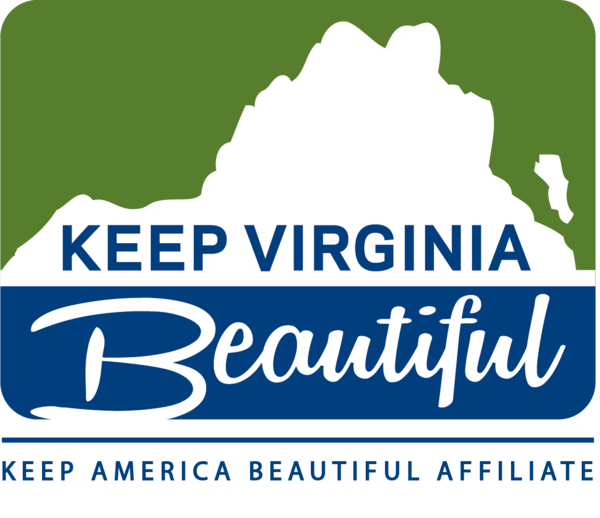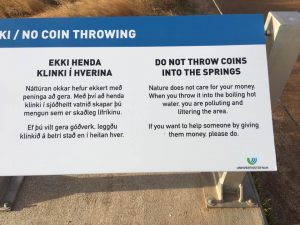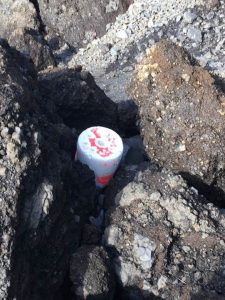Reflections from a Land of Fire and Ice
We’ve never met, but you know me. My name is Chris and I work for Rocket Pop Media in Richmond. For over six years, we’ve worked for the team at Keep Virginia Beautiful. We do simple things like print their business cards, help them with this website, share the word about wonderful events like Shiver in the River… those sorts of things. It’s an easy gig, as our company completely buys what Keep Virginia Beautiful is selling – reduce, reuse, recycle. We’ve worked really hard to become a paper-less office and recycle everything we possibly can. We also try and get out to lend a hand whenever Keep Virginia Beautiful hosts a cleanup or green event.
So anyway, I met with their Executive Director Mike Baum, and was sharing some thoughts about a recent trip I had made to Iceland. Ten days. It truly is a magical land. And they have a different mindset about what makes Iceland beautiful and how they can keep it that way. He encouraged me to share some insights with you.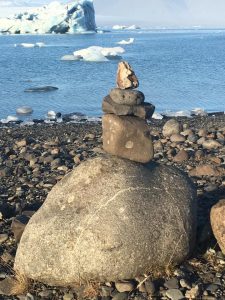
Iceland rose from the sea in a series of volcanic eruptions millions of years ago. Much of the country is covered in either soaring volcanic cliffs or long-dormant lava fields. There are about 330,000 people in all of Iceland, and over 200,000 of them live in Reykjavic, their capital city. It’s the Northern-most capital city in the world. Another large city is nearby Keflavik, and the rest of the country is mostly small villages, sheep, and horses.
Lots of horses.
Horses around the world have four gaits – walk, trot, canter, and gallop. The Icelandic horse has a fifth gait – walk, trot, canter, tolt, and gallop. Vikings brought horses with them to Iceland over 1,000 years ago, and there has never been another horse allowed into the country. They’re 100% pure Icelandic horse, and have never been vaccinated, as they’ve never had contact with outside equine diseases. I did make the rather abrupt discovery in the middle of a lava field that I don’t know how to tolt on an Icelandic horse, but that’s another story…
One of the first things you notice in Iceland is that there are no chimneys. That’s because there are no trees. When the Vikings first arrived, much of the Southern coast was heavily forested. The Vikings cut the trees down to build homes, boats, and forges for iron, and for the last 50 years, Icelanders have fought to bring them back, one seedling at a time.
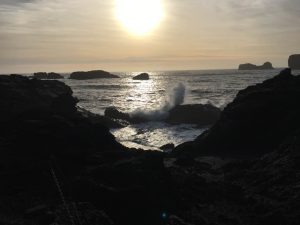 Iceland also gets all of its energy from either geothermal or hydropower. Everywhere you go in Iceland you see majestic waterfalls, and the water from your tap is cool, clear, glacier water. When you linger in a steamy hot shower, you smell a hint of sulfur.
Iceland also gets all of its energy from either geothermal or hydropower. Everywhere you go in Iceland you see majestic waterfalls, and the water from your tap is cool, clear, glacier water. When you linger in a steamy hot shower, you smell a hint of sulfur.
A few hours outside of Reykjavic is a town called Geysir. They have a geyser there called Geysir, and it’s why we call a geyser a “geyser.” It’s a National Park and protected space, and there aren’t really any trash cans. That’s because people in Iceland don’t generate a lot of trash. Walking downtown (and even in some of the smaller villages) you never see one trash can. You see two – one for general rubbish and one for recycling. We rented an Air B-n-B, and it had one small trash can under the kitchen sink – around the size of one you might keep in your bathroom. All of your rubbish had to fit into a small trash chute about as big around as a basketball, and you composted kitchen waste, and recycled the rest.
They’re really serious about recycling in Iceland.
They also take care of smokers. You can hardly pass a block without coming across a cigarette urn. People smoke there just like every city and country, but they’re fastidious about their butts. In several of the parks we visited, guides and rangers sort of crab-walked the parking lots, picking up the errant butts of thoughtless world travelers.
We went to a place called Silfra. A waterfall emerges from a sheer rock face, and water from a glacier over 100 miles away fills a fissure in the ground. It takes the water over 100 years to get there, and believe me when I tell you it’s clear and pure. Silfra is where the North American tectonic plate meets the Eurasian tectonic plate, and you can scuba between the continents. You can see 30 feet below you and 100 feet in front of you. It was 31 degrees the day we went, and the water stays around 34, but we didn’t notice. Silfra feeds a stream which empties into a land-locked lake full of trout that are 3-feet long if they’re an inch. No natural predators, and very limited fishing, so they just keep growing.
The pools and streams at Silfra were notable for their lack of litter or coins. Like most National Parks, signs reminded us that nature didn’t really need our money. And the people of Iceland like to keep things tidy and natural.
Iceland seems to realize that they’ve got something special. They’re contemplating measures to limit tourism while still embracing this vital driver of their economy. But it seems like protection of and harmony with their natural environment seeps into everything that they do. It’s a mindset – a national mantra. Iceland isn’t without litter. We found a washed-up fishing buoy on a pristine beach of pitch-black volcanic sand. But the Icelandic people are diligent about making this an exception.
What that Americans would be so engaged.
